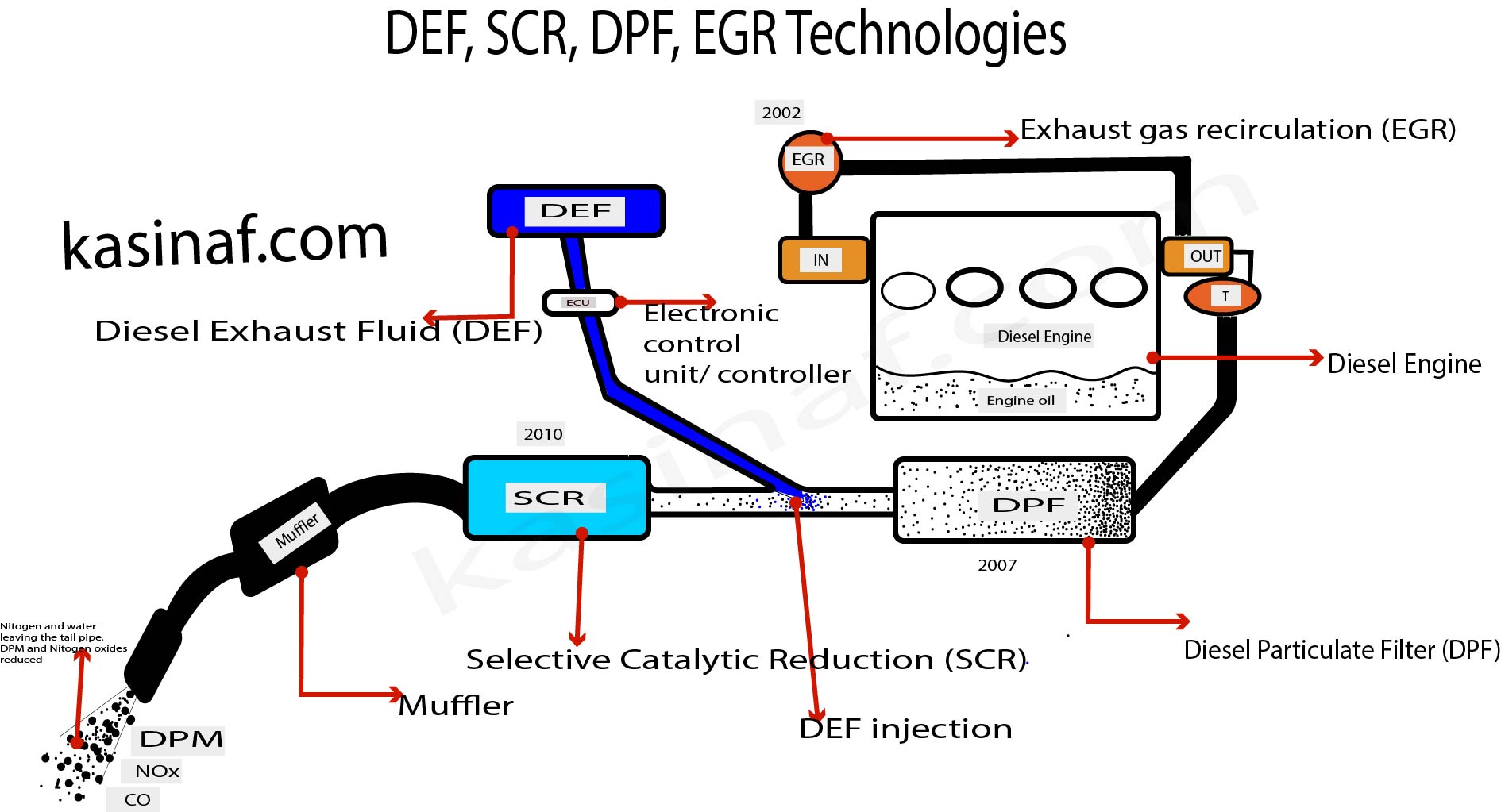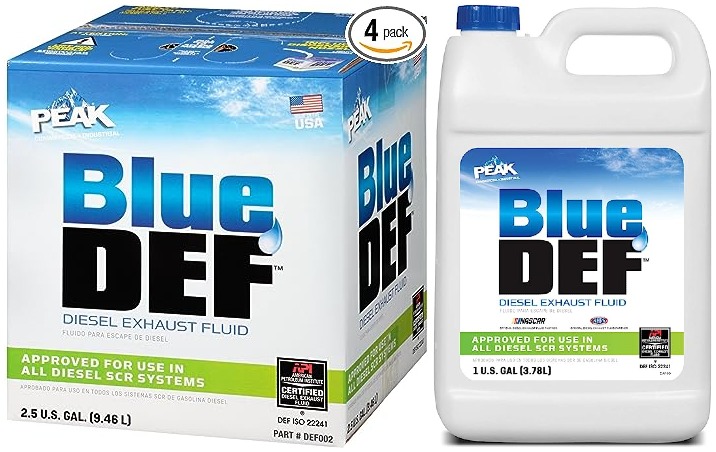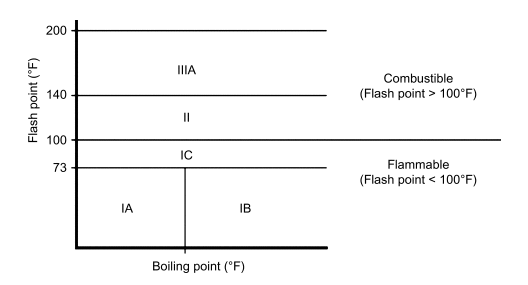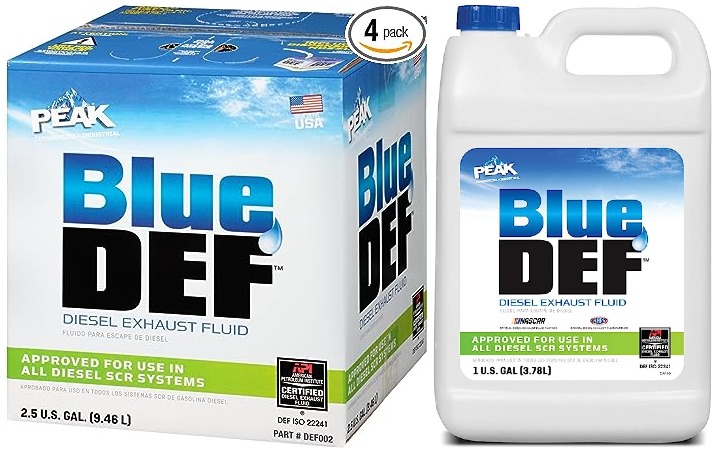In this article you are going to know every thing about off road diesel or Red diesel in detail.
Red diesel, also known as gas oil, is a type of diesel fuel that is typically used for off-road vehicles, machinery, and equipment that is not used on public roads for example heating, rail transport and agricultural sector. It is called “red” diesel because it has a red dye added to distinguish it from regular diesel, which is taxed differently and is intended for use in on-road vehicles.
Red diesel is chemically similar to regular diesel, but it typically contains higher levels of sulfur and is not subject to the same regulations as regular diesel. As a result, it is usually cheaper than regular diesel.
It is important to note that using red diesel in an on-road vehicle or equipment that is not exempt from road tax is illegal in many countries, including the United Kingdom and the United States.
What is dyed diesel?
Typically, dyed diesel refers to red diesel also called off-road diesel.
Dyed diesel is a type of diesel fuel that has been colored with a dye to indicate that it is intended for use in off-road vehicles or equipment, such as construction equipment, agricultural machinery, and generators. The dye is added to the fuel at the refinery or terminal to distinguish it from on-road diesel fuel, which is subject to higher taxes and regulations.
What is farm diesel?
Farm diesel is a type of diesel fuel that is used primarily in agricultural operations, such as on farms and ranches. It is also sometimes called off-road diesel, as it is not subject to the same taxes and regulations as on-road diesel fuel.
Farm diesel is similar to on-road diesel fuel in terms of its chemical composition and performance, but it may contain higher levels of sulfur and other impurities, as it is not subject to the same emission standards. This can lead to higher levels of emissions from farm equipment, which can be a concern for air quality and public health.
In the United States, farm diesel is typically dyed red to distinguish it from on-road diesel fuel, and it is subject to a lower tax rate. However, it is illegal to use farm diesel in on-road vehicles, and doing so can result in fines and penalties.
What is green diesel?
Green diesel is a type of diesel fuel that is commonly used for on-road transportation. Refineries add a green dye to the fuel to help identify it, and this dye is most noticeable when the fuel is freshly dispensed. Over time, the dye fades to a yellow or darker color, so checking for a “bright” appearance with a slight green tint can be an indicator of the fuel’s freshness and quality. This visual inspection is important for ensuring that the diesel fuel is in good condition for use in vehicles.
What color is dyed diesel?
The color of dyed diesel can vary depending on the country or region, but in the United States, it is typically red. The red dye is added to the diesel fuel to distinguish it from on-road diesel fuel, which is subject to higher taxes and regulations. The red color makes it easy for authorities to identify whether a vehicle is using the correct type of diesel fuel, and it helps to prevent tax evasion and environmental violations. In other countries, dyed diesel may be colored pink, purple, or another color to distinguish it from on-road diesel fuel.
Why is diesel dyed?
Diesel fuel is often dyed for taxation and regulatory purposes. In many countries, diesel fuel intended for off-road use or agricultural purposes is taxed at a lower rate than diesel fuel intended for on-road use. By dyeing the off-road diesel fuel, it becomes easier to enforce the regulations and ensure that the lower-taxed fuel is not being used illegally in on-road vehicles.
The dye used in diesel fuel is usually red, but it can also be green or blue. The dye is added to the fuel during the refining process, and it is designed to be very difficult to remove. This means that even if someone tries to illegally use the lower-taxed off-road diesel in an on-road vehicle, the dye will remain in the fuel and will be detectable by authorities.
It’s worth noting that using dyed diesel fuel in on-road vehicles can result in significant fines and penalties, so it’s important to use the appropriate type of diesel fuel for your vehicle’s intended use.
What is the name of the red dye used to turn off-road diesel red?
The red dye used to turn off-road diesel fuel red is typically a chemical compound called Solvent Red 26, also known as Sudan Red 529 or Solvent Red 164. This dye is added to the diesel fuel at the refinery or terminal before it is delivered to the end user.
Solvent Red 26 is a synthetic organic dye that is commonly used in the petroleum industry to color diesel fuel and other hydrocarbon products. It is a bright red pigment that is highly visible, even at low concentrations, which makes it useful for distinguishing off-road diesel fuel from on-road diesel fuel.
In addition to Solvent Red 26, other dyes may also be used to color off-road diesel fuel in different countries or regions. However, the use of any dye in diesel fuel is typically tightly regulated by government agencies to prevent tax evasion and environmental violations.
What is off-road diesel?
Off-road diesel, also known as “dyed diesel,” is diesel fuel that is intended for use in equipment and vehicles that are not licensed for use on public roads. Off-road diesel is often used in construction equipment, farming machinery, and other off-road vehicles.
Off-road diesel is chemically the same as on-road diesel fuel, but it is typically dyed red to differentiate it from on-road diesel fuel. The red dye is added to the fuel to help law enforcement officials identify whether someone is illegally using the lower-taxed off-road diesel fuel in on-road vehicles.
Is off-road diesel or dyed diesel high sulfur diesel?
it is produced and sold. In some regions, off-road diesel may have a higher sulfur content than on-road diesel because it is subject to different regulations and standards.
However, many countries have introduced regulations to reduce the sulfur content in all types of diesel fuel, including off-road diesel. For example, in the United States, all diesel fuel, including off-road diesel, must meet ultra-low sulfur diesel (ULSD) standards, which limit the sulfur content to 15 parts per million (ppm) or less.
The use of ULSD has been shown to reduce emissions of particulate matter and nitrogen oxides, which can have negative impacts on air quality and human health. Therefore, it is important to use diesel fuel that meets the appropriate regulatory standards for your region and to follow best practices for handling and storing diesel fuel.
Is off-road diesel or dyed diesel ultra-low sulfur diesel?
In many countries, including the United States, off-road diesel or dyed diesel must meet ultra-low sulfur diesel (ULSD) standards. ULSD is a type of diesel fuel that contains 15 parts per million (ppm) or less of sulfur. This low sulfur content is mandated by environmental regulations to reduce emissions of particulate matter and nitrogen oxides from diesel engines, which can have negative impacts on air quality and human health.
What is dyed ULSD fuel?
Dyed ULSD (Ultra-Low Sulfur Diesel) fuel is a type of diesel fuel that has been dyed with a specific color, usually red or another bright color, to indicate that it is intended for off-road use only and is subject to a lower tax rate compared to on-road diesel fuel.
The dye used in dyed ULSD fuel is typically very difficult to remove, making it easier to enforce regulations and prevent illegal use of the lower-taxed fuel in on-road vehicles.
ULSD fuel is a cleaner-burning diesel fuel that contains 15 parts per million (ppm) or less of sulfur, compared to the previous standard of 500 ppm for regular diesel fuel. This reduced sulfur content has been shown to reduce emissions of particulate matter and nitrogen oxides, which can have negative impacts on air quality and human health.
It’s important to note that using dyed ULSD fuel in on-road vehicles is illegal and can result in significant fines and penalties. It’s important to use the appropriate type of diesel fuel for your vehicle’s intended use and to ensure that the fuel meets the appropriate regulatory standards for your region.
Is dyed or off-road diesel flammable?
Yes, both dyed or off-road diesel fuel and on-road diesel fuel are flammable. Diesel fuel is a hydrocarbon-based liquid that is highly combustible, meaning it can ignite and burn easily under the right conditions.
However, diesel fuel has a higher flash point than gasoline, which means it requires a higher temperature to ignite. This makes it less likely to ignite accidentally, but it also means that diesel fuel can be more difficult to ignite in cold weather.
It’s important to handle diesel fuel with care and follow appropriate safety precautions when using or storing it, as with any flammable liquid. This includes avoiding smoking or using open flames near the fuel, using appropriate storage containers, and ensuring that spills are cleaned up promptly and safely.
Is dyed diesel #1 or # 2 diesel?
Dyed diesel fuel can be either #1 diesel or #2 diesel, or a blend of the two. The difference between #1 diesel and #2 diesel is primarily in their viscosity and boiling points.
#2 diesel is the most commonly used diesel fuel and is suitable for most diesel engines. It has a higher boiling point than #1 diesel, making it more suitable for use in cold weather conditions. #2 diesel also has a higher energy content than #1 diesel, which means it provides more power and better fuel economy.
#1 diesel has a lower boiling point than #2 diesel, making it more suitable for use in very cold weather conditions. However, it also has a lower energy content than #2 diesel, which means it provides less power and lower fuel economy.
Both #1 and #2 diesel can be dyed to indicate that they are intended for off-road use only and subject to a lower tax rate compared to on-road diesel. The use of dyed diesel in on-road vehicles is illegal and can result in significant fines and penalties.
Why does the government require diesel be dyed red?
The government requires diesel fuel to be dyed red to indicate that it is intended for off-road use only and subject to a lower tax rate compared to on-road diesel. The use of dyed diesel in on-road vehicles is illegal and can result in significant fines and penalties.
The dye used in dyed diesel is typically very difficult to remove, making it easier to enforce regulations and prevent illegal use of the lower-taxed fuel in on-road vehicles.
The tax on on-road diesel fuel is higher than the tax on off-road diesel fuel. This tax revenue is used to support highway construction and maintenance, as well as other transportation-related programs. By requiring diesel fuel to be dyed red, the government can differentiate between on-road and off-road diesel use, and ensure that the appropriate tax revenue is collected to support these programs.
In addition to the tax implications, the use of dyed diesel in on-road vehicles can also have negative impacts on air quality and human health, as it may not meet the same emissions standards as on-road diesel fuel. Therefore, it’s important to use the appropriate type of diesel fuel for your vehicle’s intended use and to ensure that the fuel meets the appropriate regulatory standards for your region.
IS OFF-ROAD DIESEL BAD FOR MY TRUCK?
Off-road diesel is not inherently bad for your truck, but it may not be suitable for use in all types of diesel engines. Off-road diesel is typically dyed to indicate that it is intended for off-road use only and is subject to a lower tax rate compared to on-road diesel fuel. The use of dyed diesel in on-road vehicles is illegal and can result in significant fines and penalties.
In terms of its effects on your truck’s engine, off-road diesel may have different properties and characteristics than on-road diesel, depending on its formulation and additives. This could potentially affect your engine’s performance, fuel economy, and emissions.
It’s important to use the appropriate type of diesel fuel for your vehicle’s intended use and to ensure that the fuel meets the appropriate regulatory standards for your region. If you are unsure whether off-road diesel is suitable for use in your truck, you should consult your vehicle’s owner’s manual or contact a qualified mechanic or diesel fuel supplier for guidance.
How do i order off-road diesel for a construction project?
To order off-road diesel for a construction project, you typically need to follow these steps:
- Determine the amount of off-road diesel you will need for your project.
- Contact a reputable fuel supplier or distributor that offers off-road diesel. You can find them online or in the phone book.
- Provide the supplier with your project details, including the location and duration of the project, as well as the amount of fuel you will need.
- Arrange a delivery schedule that works for your project timeline. Some suppliers offer regular deliveries, while others may require advanced notice.
- Provide any necessary documentation, such as a tax exemption certificate or proof of off-road use, to ensure you are not charged road taxes or fines for illegal use of dyed fuel.
- Arrange for appropriate storage and handling of the fuel to comply with safety regulations.
- Monitor fuel usage and reorder as necessary to ensure that you have enough fuel to complete your project without interruption.
Is dyed diesel or off-road diesel heating oil?
Dyed diesel and off-road diesel are not the same as heating oil, although they are all petroleum-based fuels.
Dyed diesel and off-road diesel are types of diesel fuel that have been dyed with a specific color, usually red or another bright color, to indicate that they are intended for off-road use only and are subject to a lower tax rate compared to on-road diesel fuel. Dyed diesel and off-road diesel are typically used in off-road vehicles and equipment, such as construction equipment, generators, and agricultural machinery.
Heating oil, also known as furnace oil or boiler fuel, is a type of fuel used for home heating systems, boilers, and furnaces. It is similar to diesel fuel in its chemical composition but has a higher sulfur content and may contain additional additives to improve its combustion characteristics.
While there may be some overlap in the chemical compositions of these fuels, they are generally used for different purposes and are not interchangeable. It is important to use the appropriate type of fuel for your equipment or system’s intended use and to ensure that the fuel meets the appropriate regulatory standards for your region.
Is dyed diesel and off-road diesel stove oil?
Dyed diesel and off-road diesel are not the same as stove oil. While all three are petroleum-based fuels, they have different chemical compositions and are used for different purposes.
Dyed diesel and off-road diesel are types of diesel fuel that have been dyed with a specific color, usually red or another bright color, to indicate that they are intended for off-road use only and are subject to a lower tax rate compared to on-road diesel fuel. Dyed diesel and off-road diesel are typically used in off-road vehicles and equipment, such as construction equipment, generators, and agricultural machinery.
Stove oil, also known as heating oil or furnace oil, is a type of fuel that is used for home heating systems, boilers, and furnaces. It is similar to diesel fuel in its chemical composition but has a higher sulfur content and may contain additional additives to improve its combustion characteristics.
While there may be some overlap in the chemical compositions of these fuels, they are generally used for different purposes and are not interchangeable. It’s important to use the appropriate type of fuel for your equipment or system’s intended use and to ensure that the fuel meets the appropriate regulatory standards for your region.
Is dyed diesel and off-road diesel kerosene?
No, dyed diesel and off-road diesel are not the same as kerosene. While all three are petroleum-based fuels, they have different chemical compositions and are used for different purposes.
Dyed diesel and off-road diesel are types of diesel fuel that have been dyed with a specific color, usually red or another bright color, to indicate that they are intended for off-road use only and are subject to a lower tax rate compared to on-road diesel fuel. Dyed diesel and off-road diesel are typically used in off-road vehicles and equipment, such as construction equipment, generators, and agricultural machinery.
Kerosene, on the other hand, is a type of fuel that is typically used for heating, lighting, and cooking. It has a lower viscosity and boiling point than diesel fuel, which means it ignites at a lower temperature and burns more cleanly. Kerosene can also be used in certain types of jet engines.
Does off-road diesel freeze?
The temperature at which diesel fuel will freeze depends on a variety of factors, including its chemical composition and the specific additives it contains.
Most diesel fuels contain a blend of additives designed to improve their cold weather performance, such as anti-gel additives and winterization additives. These additives can help lower the fuel’s pour point and prevent it from solidifying or gelling in cold temperatures.
However, if temperatures drop low enough, even diesel fuel with these additives can still freeze or become too thick to flow properly. In such cases, it may be necessary to use a fuel with a lower pour point, add additional cold weather additives to the fuel, or take other steps to protect your fuel system from damage due to fuel gelling.
It’s important to follow the fuel manufacturer’s recommendations for storage and handling of off-road diesel fuel, especially during cold weather months. This may include using fuel additives, insulating storage tanks or fuel lines, or ensuring that equipment is properly warmed up before use.
Does off-road diesel gel in cold weather?
Yes, off-road diesel can gel in cold weather if the temperature drops low enough. Diesel fuel gelling occurs when the fuel’s paraffin wax crystallizes and solidifies, making it thick and unable to flow properly through the fuel system.
The exact temperature at which diesel fuel will begin to gel depends on a variety of factors, including the fuel’s chemical composition, the presence of additives, and the specific operating conditions. In general, off-road diesel fuel is formulated with cold weather additives to improve its performance in colder temperatures, but extreme cold can still cause the fuel to gel.
To prevent diesel fuel gelling, it is important to use fuel with the appropriate cold weather rating for your region and to ensure that your fuel system is properly maintained and insulated. This may include adding anti-gelling additives to the fuel, keeping fuel tanks full to minimize condensation, and using a fuel tank heater or other warming devices to keep the fuel from getting too cold.
If your diesel fuel does gel, it may be necessary to take steps to thaw the fuel and remove any solidified wax from the fuel system before it can be used again. This may involve warming the fuel tank or using a fuel de-icer or other specialized products to dissolve the wax.
Does off-road diesel go bad?
Yes, like all fuels, off-road diesel can go bad over time if it is not properly stored or maintained. Diesel fuel contains a variety of organic compounds that can break down over time, especially in the presence of oxygen and other contaminants.
As diesel fuel degrades, it can form sludge, sediment, and other impurities that can clog fuel filters and damage fuel pumps and other components. In addition, old diesel fuel may not burn as efficiently as fresh fuel, leading to reduced engine performance and increased emissions.
To prevent off-road diesel from going bad, it is important to follow best practices for fuel storage and handling. This may include keeping fuel tanks clean and dry, using high-quality fuel filters, and using additives to prevent fuel degradation and extend the fuel’s storage life.
The specific storage and handling recommendations for off-road diesel may vary depending on the fuel formulation and regulatory requirements in your region. It is important to check with the fuel manufacturer or a trusted fuel supplier to determine the best practices for storing and maintaining your diesel fuel.
DOES OFF-ROAD DIESEL HAVE SULFUR IN IT?
Yes, off-road diesel typically contains sulfur, although the amount of sulfur can vary depending on the specific formulation and regulatory requirements in a given region.
Before the implementation of the Ultra-Low Sulfur Diesel (ULSD) standards in 2006, diesel fuel used in the United States contained high levels of sulfur, which could contribute to air pollution and other environmental problems. Today, most diesel fuels, including off-road diesel, are required to meet ULSD standards, which limit the sulfur content to 15 parts per million (ppm) or less.
However, there are some exceptions to the ULSD standards, and certain types of off-road diesel, such as marine diesel or locomotive diesel, may be allowed to contain higher levels of sulfur under certain conditions. It’s important to check the regulatory requirements in your region to determine the allowable sulfur content for off-road diesel fuel.
How long can i store off-road or dyed diesel in a fuel tank?
Without treatment, diesel fuel is typically considered usable for about one year. However, when treated with a biocide to prevent the growth of microorganisms in the fuel tank, diesel can remain usable for up to two to three years. As time goes on, diesel fuel will naturally start to deteriorate, which is indicated by a loss of brightness when sampled. It is recommended that after three years, a sample of the fuel should be tested to ensure that it still meets the required specifications for safe and reliable use.
What is the difference between off-road diesel and on-road diesel?
The primary difference between off-road diesel and on-road diesel is the intended use of the fuel. On-road diesel is designed for use in vehicles that are driven on public roads, such as cars, trucks, and buses. Off-road diesel, on the other hand, is designed for use in off-road or non-highway vehicles, such as tractors, construction equipment, and generators.
Off-road diesel and on-road diesel have similar chemical compositions, but there are differences in the regulations that govern their production, distribution, and use. For example, off-road diesel is typically subject to lower taxes than on-road diesel, and it may be subject to different sulfur content requirements. Off-road diesel may also be dyed to differentiate it from on-road diesel and to help enforce tax and regulatory compliance.
In addition to the regulatory differences, there may be practical differences in the performance of off-road diesel and on-road diesel. Off-road diesel may be formulated differently to meet the specific needs of off-road equipment, such as providing improved performance in cold weather or better lubricity for high-pressure fuel injection systems.
Overall, the main difference between off-road diesel and on-road diesel is their intended use, which leads to differences in regulations, taxes, and sometimes fuel formulation.
Table for differences between off-road diesel and on road diesel
| Off-Road Diesel | On-Road Diesel | |
|---|---|---|
| Color | Dyed Red | Clear |
| Sulfur | Up to 5000 ppm | Ultra-Low Sulfur |
| Tax | Lower Tax or Exempt | Higher Tax |
| Use | Off-road vehicles, generators, boats, construction equipment | Highway vehicles, buses, trucks |
| Penalty for Illegal Use | Fines and penalties for tax evasion | Fines and penalties, potential loss of license or registration |
Note: The specifics may vary by state or country,
What is the difference between dyed diesel and heating oil?
Dyed diesel and heating oil are similar in that they are both distillates of crude oil and have a similar chemical makeup. However, there are some differences between the two.
Dyed diesel is specifically designed for use in diesel engines and is subject to state and federal regulations. It is dyed red to indicate that it is not for use on public roads and is typically used in off-road vehicles and equipment.
Heating oil, on the other hand, is designed for use in home heating systems and is not subject to the same regulations as diesel fuel. It is also typically clear or light yellow in color, whereas dyed diesel is always red.
While it is possible to use heating oil as a substitute for diesel fuel in emergency situations, it is not recommended to use dyed diesel as a substitute for heating oil as it may contain sulfur and other contaminants that could damage the heating system.
Table for Differences between dyed diesel and heating oil
| Dyed Diesel | Heating Oil | |
|---|---|---|
| Intended Use | Vehicles, machinery, and equipment not for use on public roads | Home heating systems |
| Sulfur Content | Varies, but typically ultra-low sulfur diesel (ULSD) | Varies, but typically high sulfur |
| Color | Red | Clear to yellow |
| Additives | Contains additives to improve engine performance and prevent gelling | Contains additives to improve performance in home heating systems |
| Taxation | Typically lower tax rate or no tax | Typically taxed as a home heating |
| Regulation | Regulated by EPA and state agencies for off-road use | Regulated by state agencies for home heating use |
| Availability | Widely available at fueling stations | Typically only available through heating oil delivery services |
What are the fuel taxes on off-road diesel?
The taxes on fuel can differ from state to state, and sometimes even vary by local municipality. When it comes to off-road diesel, the only taxes that typically need to be taken into account are the sales taxes on the fuel itself. In Oregon, there are no taxes charged on dyed off-road fuel. However, in Washington state, sales taxes are imposed on dyed diesel fuel, which are added to the sale price of the fuel. It is worth noting that if clear diesel is used in Washington state, there is no sales tax levied as the road tax is already being charged.
Do you pay sales tax on dyed diesel or off-road diesel in washington state?
Yes, sales taxes are imposed on dyed diesel or off-road diesel in Washington State. The sales taxes are added to the sale price of the fuel and vary by county or municipality within the state. However, it’s worth noting that if clear diesel is used instead of dyed diesel in Washington State, no sales tax is levied as the road tax is already being charged.
What happens if i use dyed diesel in an on-road vehicle?
Using dyed diesel in an on-road vehicle is illegal in the United States and can result in serious penalties. The red dye added to the fuel indicates that it is not taxed for use on public roads and is intended for off-road use only, such as for farming, construction, or other non-highway purposes.
If you are caught using dyed diesel in an on-road vehicle, you may be subject to fines, penalties, and legal action by the government, as well as damage to your vehicle’s engine and fuel system. It’s important to only use the appropriate fuel for your vehicle, and to ensure that you are complying with all applicable laws and regulations.
How does the government test if someone used dyed diesel?
The government can test if someone has used dyed diesel fuel by conducting a fuel sample test. This involves taking a sample of the fuel from the vehicle’s fuel tank or from the fuel storage tank, and analyzing it for the presence of the red dye marker that is added to off-road diesel fuel. The test is typically conducted by authorized inspectors from the Environmental Protection Agency (EPA) or the Internal Revenue Service (IRS). In addition to the fuel sample test, the government may also conduct inspections and audits to verify compliance with fuel tax regulations and ensure that the proper fuel is being used for its intended purpose. If it is found that dyed diesel has been used in an on-road vehicle, the driver or operator may face penalties, fines, and legal action.
Regulators typically test for illegal use of dyed diesel by taking a fuel sample from the tank or spinning the fuel filter to observe if the fuel is obviously dyed. If they suspect the use of dyed diesel in a vehicle and the fuel is clear, they can use a special black light to detect any traces of the red dye used in off-road diesel on the filter, fuel tanks, and various engine parts. If even a mild trace of the red dye is detected, the vehicle operator will be cited. Kits are available online for filtering dye out of fuel, but they are not effective enough to avoid detection by these special lights.
Why is off road diesel illegal for pick up trucks to use?
Off-road diesel is not necessarily illegal for pickup trucks to use, but it is illegal for them to use it for on-road purposes. The reason for this is that off-road diesel is dyed red and is exempt from certain taxes that are included in the price of on-road diesel. This means that using off-road diesel for on-road purposes is essentially tax evasion, which is illegal. Additionally, off-road diesel may not meet the same emissions standards as on-road diesel, so using it in on-road vehicles could result in higher levels of pollution.
Can you use dyed diesel in a diesel pickup truck?
No, you cannot legally use dyed diesel fuel in a diesel pickup truck that is operated on public roads in the United States. The red dye added to the fuel indicates that it is not taxed for use on public roads and is intended for off-road use only, such as for farming, construction, or other non-highway purposes. It’s important to only use the appropriate fuel for your vehicle, and to ensure that you are complying with all applicable laws and regulations to avoid potential fines, penalties, and legal action by the government. Using dyed diesel in a pickup truck can also damage your vehicle’s engine and fuel system.
Can refrigerated trailers or “reefers” use dyed diesel even if they are attached to a truck moving it on the highway?
Yes, refrigerated trailers are off-road equipment. Since the engine of a refrigeration trailer powered by diesel fuel is not used to move the vehicle on the road, it is considered off-road equipment. Therefore, it can use either dyed or clear ultra-low sulfur diesel fuel. However, if clear on-road fuel is used, you can file for fuel tax refunds if you have proof that the fuel was used in off-road equipment. It is important to keep proper documentation to support your claims, so it is recommended to consult with a CPA or accountant for guidance.
How do i get water out of my off-road diesel equipment’s fuel tank?
Getting water out of an off-road diesel equipment’s fuel tank is a relatively straightforward process. Here are the steps you can take:
- Stop using the equipment immediately: If you notice water in your equipment’s fuel tank, stop using it right away. Continuing to use the equipment can cause serious damage to the engine.
- Drain the fuel tank: First, you’ll need to drain the fuel tank completely. You can do this by using a hand pump or by opening the tank’s drain valve. Make sure you have a suitable container to collect the fuel and water mixture.
- Remove the water: Once you’ve drained the tank, remove the remaining water from the tank by using a water-absorbing product like a fuel water absorber or a fuel polishing system. These products work by attracting the water to them and holding it there, allowing you to remove it easily.
- Clean the tank: After removing the water, clean the tank thoroughly to prevent any residual water from causing further issues. You can do this by using a tank cleaning solution or by taking the tank to a professional tank cleaning service.
- Refill the tank: Once the tank is clean and dry, refill it with fresh off-road diesel fuel.
It’s worth noting that preventing water from entering the fuel tank in the first place is the best way to avoid this issue. Make sure to keep your equipment’s fuel tank sealed tightly and inspect it regularly for any signs of damage or leaks.
How do iIstop biological growth in my off-road diesel fuel tank?
To stop biological growth in an off-road diesel fuel tank, you can use a biocide, which is a chemical agent designed to kill or inhibit the growth of microorganisms such as bacteria, fungi, and algae. You can purchase biocides at most auto parts or hardware stores.
To use a biocide, you will need to follow the manufacturer’s instructions for the particular product you have purchased.
In general, you will add the biocide to the fuel tank at a specified concentration, and then allow it to circulate through the fuel system.
This will kill any microorganisms that are present and prevent further growth. It is also important to regularly inspect and clean the fuel tank and fuel system to remove any accumulated debris or sediment, which can provide a habitat for microorganisms to grow.
Related Posts:
More posts:
 Things you should know about premium fuel?
Things you should know about premium fuel?
 10 things you need to know about unleaded 88 gas
10 things you need to know about unleaded 88 gas
 Flash point of petrol and diesel explained
Flash point of petrol and diesel explained
 Flash Point and Autoignition in Coatings
Flash Point and Autoignition in Coatings
 What is in DEF? Ingredients of Diesel Exhaust fluid.
What is in DEF? Ingredients of Diesel Exhaust fluid.
 What happens if you put DEF in a gasoline engine?
What happens if you put DEF in a gasoline engine?
 Things you must know before buying a house with propane for heat. Propane heat for homes
Things you must know before buying a house with propane for heat. Propane heat for homes
 Who repairs a gas leak?
Who repairs a gas leak?







Thank you for letting us know that red diesel is the type of diesel fuel used for off-road vehicles and machinery since they contain higher levels of sulfur. My brother owns a construction company, and it seems like he needs a diesel supply for their machines at work. I hope he finds a trusted diesel depot to contact for deliveries from now on.